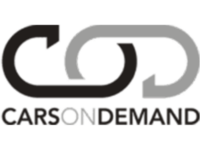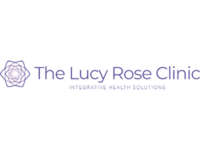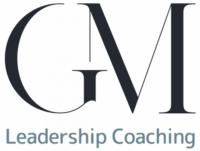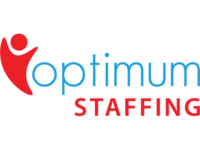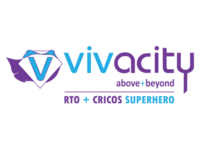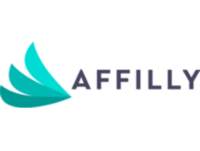The Concept of Intent-First Funnels for Smarter Conversions
By Cameron Roberts – Founder & CEO of Bubblegum Marketing,
Posted On June 22, 2025
Intent-First Marketing Defined
An intent-first funnel places intent at the center of the marketing strategy. Intent means knowing what the customer is currently thinking, wants, or needs. Hence, instead of imposing a one-size-fits-all funnel, the funnel adapts to signals showing where the customer is in the decision-making process. More importantly, this approach ensures a smooth onward journey for prospects from their first curiosity to becoming loyal buyers.
The Psychology Behind Customer Intent
Decisions are never made at random by a customer. The customer keeps on searching, comparing, or questioning where a genuine need arises. Behaviors point toward their wants. Realising intent signals, such as page visits, time spent focusing on a topic, or questions versus marketing through relevance. Customers with relevance start trusting your brand and then are forcedsw3211 into action.
Significance of Following an Intent-First Approach
An Intent-First approach makes the sales funnel more delightful from a customer’s perspective. Customers never have to go through irrelevant offers or content. Your message hits them right where they are in the process. This concentration makes conversion rates go up even more and thus helps nurture and create stronger relationships among parties because your endeavors are aligned with their actual needs.
Identifying Customer Intent from the Audience
● Analysing Behavioral Data
View customer behavior on your website. Employ heatmap software, user flow charts, etc., to verify where they click, how long they stay, and what the most visited pages are.
For example, any visitor perusing pricing pages would imply intent to buy. It lets you customise the message for each user.
● Customer Feedback and Surveys
Ask your audience just what they want. Short surveys or feedback forms may yield goals or pain points. The more you know about what customers actually care about, the more you can map the funnel to those insights. This also engenders trust on their part as the brand respects their opinions.
What Do Customers Require?
An essential method of determining what is of concern to customers when analysing keywords is exploring customer requirements. Long-tail keywords allude to a customer’s context, such as “best eco-friendly running shoes.” Find out what users are typing with tools such as Google Keyword Planner or SEMrush and generate relevant content.
Design Funnels Around Customer Intent
● Mapping Customer Journey Stages Based on Intent
Each stage in the customer journey should resonate with intent signals. At the awareness stage, the person is trying to explore a problem; the content should educate or inform. In the consideration phase, clients weigh alternatives and must be given detailed guides or software demos. When distilling, the purchase path should be easy with robust calls to action. Post-purchase, the emphasis would be on retention through support or loyalty programs.
● Creating Content and Offers for the Client
Use dynamic content to suit customers’ intents. A buyer looking at eco-friendly products should be presented with sustainable offers. Through email, suggest products based on the buyer’s previous browsing paths; accompany the suggestions with discount coupons, giving them just the push they need right when the potential buyer is at the decision stage.
● Connecting Touchpoints Across Channels
Nowadays, customers engage with brands via social media, email, ads, and websites. Companies that strategise conveying a message besides all these channels garner credibility. Suppose a consumer has searched for something on the site; retarget them with very specific ads and lead follow-up emails that cater to his current standing in the funnel.
Design and Optimization of Intent-First Funnels
● Choosing the Right Marketing Technologies
Detecting intent is made easier with the use of CRM systems and marketing automation platforms. They monitor for signals such as page views, email opens, or product clicks. Once such signals are detected, they further allow you to respond in real-time with personalised messages or offers that remove conversion bottlenecks.
● Testing and Refining Funnel Stages Continuously
Never stop optimising. Always A/B test your headlines, calls-to-action, and offers. Look at your analytics to understand where customers drop off or convert; incremental changes based on data can greatly improve your funnel conversion rate.
● Monitoring Metrics and KPIs
Track metrics like conversion rate, time to purchase, and customer lifetime value. Use these insights to refine your strategy. If engagement drops at a certain step, revisit that area and optimise based on customer behavior.
Let’s Build Your Intent-First Funnel—Together
Designing your sales funnel around customer intent isn’t just a trend — it’s a necessity. When you truly understand what your audience is looking for, you can deliver the right message at the perfect moment. This leads to happier customers and better conversion rates. Start small by analysing customer signals, personalise your content, and test regularly. The future of marketing belongs to those who put customer needs first. Keep learning, adapting, and watch your conversions grow.
At BubbleGum Marketing, we design conversion-focused funnels that are built around what your audience actually wants. From automation tools to content strategies, we align every step of the funnel with your customer’s needs—so you convert more, spend less, and grow faster.
Claim your FREE Funnel Strategy Session now — and let’s create a buyer journey that works on autopilot.
FAQs
WANT TO BE OUR NEXT SUCCESS STORY?
Book a Free Consult
Schedule a 15-minute Free Consultation via Zoom meetings with our Director, Cam Roberts by clicking the button below now:
Recent Articles
- Why Your Email Click Rates Look Low in 2025
- How Our eCommerce Marketing Agency Drove 121% Growth
- What Is Google BARD? A Guide to Google’s New AI
- Facebook Ads Budgeting & Strategies for 2025
- Top Marketing Strategies from Fortune 500 Companies
- Weird & Wonderful: Things Google Probably Doesn’t Want You to Know
- Top 7 Mistakes Businesses Make Without a Facebook Ads Specialist
- Why Automated Sales Funnels Are a Game-Changer for Small Businesses
- How to Choose the Right Facebook Ads Agency in 2025
- Social Media Advertising Trends 2025 for Business Growth
Request A Quote
Request A Quote for your next Website or Funnel Project below:



























